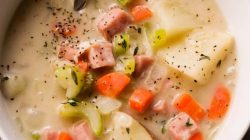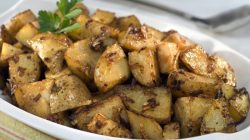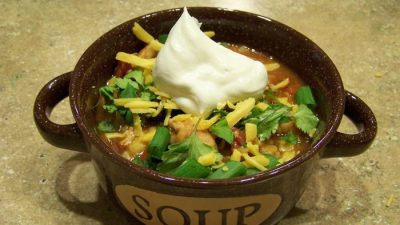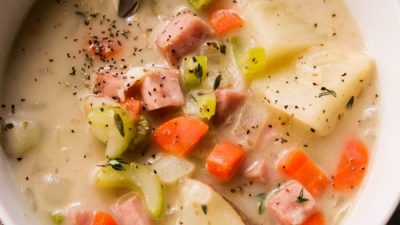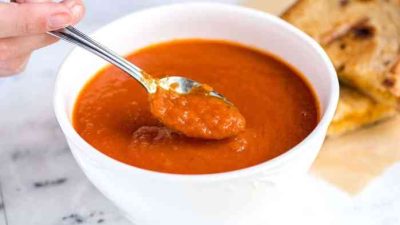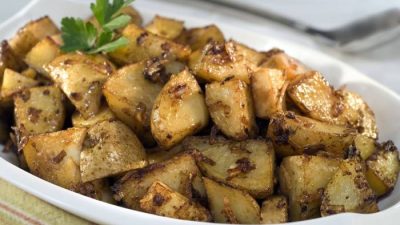Tom Yum Noodle Soup: A Culinary Exploration: Recipe For Tom Yum Noodle Soup
Recipe for tom yum noodle soup – Tom Yum noodle soup, a vibrant and flavorful dish from Thailand, offers a delightful balance of sweet, sour, salty, and spicy notes. Its popularity extends far beyond its origins, with countless variations reflecting regional preferences and culinary creativity. This exploration delves into the diverse world of Tom Yum noodle soup, covering its variations, essential ingredients, cooking process, serving suggestions, dietary adaptations, and visual appeal.
Tom Yum Noodle Soup Variations, Recipe for tom yum noodle soup
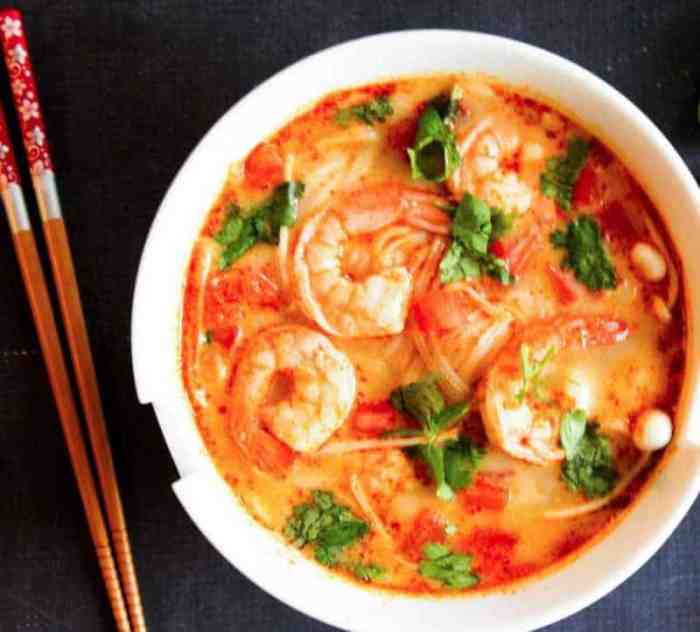
Source: recipelibrary.net
The versatility of Tom Yum noodle soup is evident in its numerous variations. These adaptations often involve changes in noodle type, key ingredients, and regional influences, resulting in a spectrum of flavor profiles. Below are some common variations.
| Variation Name | Primary Noodle Type | Key Ingredient Differences | Regional Origin |
|---|---|---|---|
| Classic Tom Yum Noodle Soup | Rice Noodles (sen mee) | Lemongrass, galangal, kaffir lime leaves, chilies, mushrooms, shrimp or chicken | Central Thailand |
| Tom Yum Goong (Shrimp) Noodle Soup | Rice Noodles (sen mee) | Emphasis on shrimp, often with added tomatoes | Central Thailand |
| Tom Yum Gai (Chicken) Noodle Soup | Egg Noodles | Chicken broth base, often includes shredded chicken | Northern Thailand |
| Tom Yum Pla (Fish) Noodle Soup | Rice Vermicelli | Fish broth, often includes fish fillets or fish balls | Southern Thailand |
| Vegetarian Tom Yum Noodle Soup | Rice Noodles (sen mee) or Glass Noodles | Omission of meat and seafood, addition of tofu, vegetables like mushrooms and bean sprouts | Various |
Comparing the flavor profiles of Classic Tom Yum, Tom Yum Goong, and Tom Yum Gai reveals subtle yet significant differences. Classic Tom Yum boasts a balanced profile, while Tom Yum Goong leans towards a briny, shrimp-forward taste. Tom Yum Gai presents a richer, more savory profile due to the chicken broth.
The historical origins of Tom Yum Goong and Tom Yum Gai are rooted in regional culinary traditions. Tom Yum Goong, with its emphasis on shrimp, reflects the abundance of seafood in Central Thailand. Tom Yum Gai, popular in the north, showcases the integration of readily available poultry into the soup.
Essential Ingredients and Substitutions
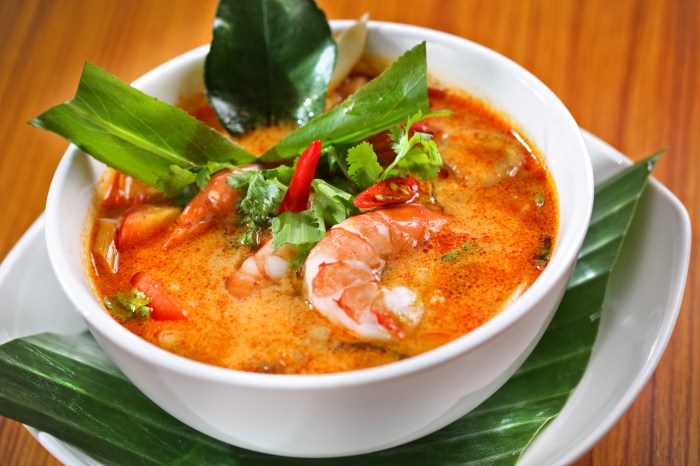
Source: carnivalmunchies.com
A classic Tom Yum noodle soup recipe hinges on a few key ingredients. Understanding their roles and potential substitutions allows for culinary flexibility and adaptation to dietary needs.
- Tom Yum Paste
- Chicken or Vegetable Broth
- Rice Noodles
- Shrimp or Chicken (optional)
- Lemongrass
- Galangal
- Kaffir Lime Leaves
- Chilies
- Fish Sauce
- Lime Juice
- Sugar
- Mushrooms
- Cilantro
Suitable substitutions for three key ingredients include using homemade Tom Yum paste instead of store-bought, vegetable broth for chicken broth to make it vegetarian, and substituting other noodles like egg noodles or glass noodles for rice noodles. These substitutions impact flavor and texture but allow for customization.
| Ingredient | Alternative | Impact on Taste | Dietary Benefits/Drawbacks |
|---|---|---|---|
| Tom Yum Paste | Homemade Paste | More nuanced and customizable flavor | May require more effort but allows for precise control of ingredients |
| Chicken Broth | Vegetable Broth | Lighter, less savory flavor | Vegetarian/vegan friendly |
| Rice Noodles | Egg Noodles | Chewier texture, slightly richer flavor | May contain eggs (not suitable for vegans) |
Step-by-Step Cooking Process
Preparing Tom Yum noodle soup involves a series of steps, each contributing to the final flavor and texture. Precise measurements and cooking times are crucial for optimal results.
- Prepare the Tom Yum paste (detailed instructions below).
- Bring the broth to a boil in a large pot.
- Add the Tom Yum paste and simmer for 5 minutes.
- Add lemongrass, galangal, and kaffir lime leaves; simmer for another 5 minutes.
- Add shrimp or chicken (if using); cook until pink and opaque.
- Add mushrooms and cook until tender.
- Season with fish sauce, lime juice, and sugar to taste.
- Add noodles and cook according to package directions until tender.
- Serve hot, garnished as desired.
To prepare the Tom Yum paste from scratch, combine 2-3 Thai chilies, 2 stalks of lemongrass (finely chopped), 1 inch of galangal (finely chopped), 2-3 kaffir lime leaves (finely chopped), 2 cloves of garlic (minced), and 1 tablespoon of shrimp paste in a food processor until a smooth paste is formed. You can adjust the ingredient ratios to your preference.
Cooking the noodles requires attention to prevent overcooking. Follow the package instructions for the specific type of noodles used. The goal is to achieve a tender but not mushy texture.
Serving Suggestions and Garnishes
The presentation of Tom Yum noodle soup enhances its appeal. Creative serving suggestions and thoughtful garnishes elevate the sensory experience.
- Serve in individual bowls for a more elegant presentation.
- Garnish generously with fresh herbs and vegetables.
- Pair with a side of steamed rice or spring rolls.
- Offer a selection of chili sauces for those who prefer extra heat.
- Include a lime wedge for individual adjustments of sourness.
Common garnishes such as chopped cilantro, sliced chilies, and lime wedges significantly contribute to the overall sensory experience.
| Garnish | Flavor Profile | Visual Appeal | Suggested Quantity |
|---|---|---|---|
| Cilantro | Fresh, herbaceous | Bright green, adds vibrancy | 1-2 tablespoons per bowl |
| Sliced Chilies | Spicy, pungent | Adds color and visual interest | 1-2 slices per bowl |
| Lime Wedges | Tart, acidic | Adds brightness and visual appeal | 1 wedge per bowl |
Dietary Adaptations and Variations
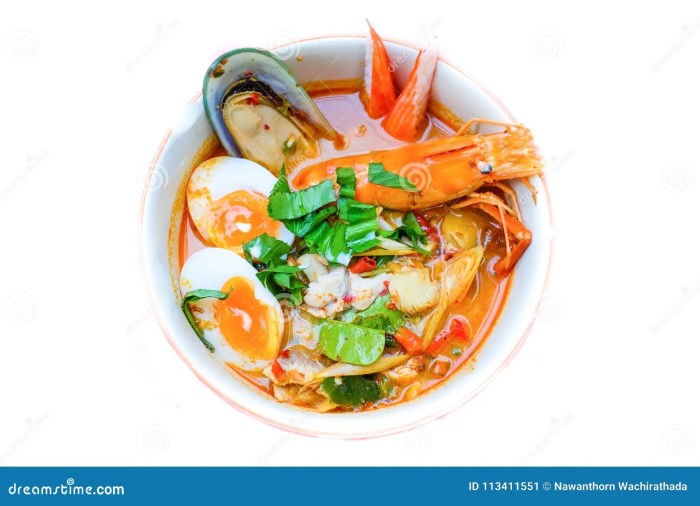
Source: dreamstime.com
Tom Yum noodle soup can be adapted to accommodate various dietary restrictions and preferences.
Vegetarian Adaptation: Omit all meat and seafood. Use vegetable broth and add tofu, mushrooms, and other vegetables for protein and flavor.
Vegan Adaptation: Use vegetable broth and omit all animal products, including fish sauce (replace with soy sauce or tamari). Ensure that the Tom Yum paste is vegan-friendly.
Gluten-Free Adaptation: Use gluten-free noodles, such as rice noodles or kelp noodles. Check all other ingredients for gluten content.
Using different types of noodles, such as rice noodles or egg noodles, alters the texture and mouthfeel of the soup. Rice noodles offer a delicate texture, while egg noodles provide a chewier bite. Adjusting the spice level is easily achieved by controlling the amount of chili in the Tom Yum paste or adding extra chili flakes as desired.
Visual Representation of the Recipe
A perfectly prepared bowl of Tom Yum noodle soup presents a vibrant and enticing visual spectacle. The broth is typically a clear, golden yellow, infused with the color of the chilies and spices. The noodles are submerged in the broth, their texture apparent. The shrimp or chicken (if included) are visible, adding pops of color and texture. Garnishes such as cilantro and chilies add further visual appeal.
The aroma of Tom Yum noodle soup is equally captivating. The fragrance of lemongrass, galangal, and kaffir lime leaves intertwines with the subtle spice of chilies and the savory notes of the broth. The overall scent is both inviting and invigorating.
Question Bank
Can I make Tom Yum Noodle Soup ahead of time?
It’s best to prepare the broth and noodles separately and combine them just before serving to maintain optimal texture and flavor. The broth can be stored in the refrigerator for up to 3 days.
What type of rice noodles are best?
Dried flat rice noodles or thin rice vermicelli work well. Choose noodles that are appropriate for the cooking time specified in your recipe.
How can I adjust the spiciness?
Start with a smaller amount of chili peppers or chili paste, and add more to taste. You can also adjust the spiciness by adding more or less of the Tom Yum paste.
Are there any alternatives to fish sauce?
Soy sauce or mushroom soy sauce can be used as a substitute, but the flavor will be different. For a vegetarian/vegan version, you could consider tamari or coconut aminos.




